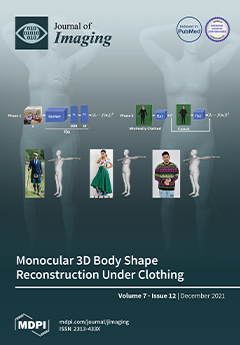Open AccessReview
Roadmap on Digital Holography-Based Quantitative Phase Imaging
by
Vinoth Balasubramani, Małgorzata Kujawińska, Cédric Allier, Vijayakumar Anand, Chau-Jern Cheng, Christian Depeursinge, Nathaniel Hai, Saulius Juodkazis, Jeroen Kalkman, Arkadiusz Kuś, Moosung Lee, Pierre J. Magistretti, Pierre Marquet, Soon Hock Ng, Joseph Rosen, Yong Keun Park and Michał Ziemczonok
Cited by 34 | Viewed by 6329
Abstract
Quantitative Phase Imaging (QPI) provides unique means for the imaging of biological or technical microstructures, merging beneficial features identified with microscopy, interferometry, holography, and numerical computations. This roadmap article reviews several digital holography-based QPI approaches developed by prominent research groups. It also briefly
[...] Read more.
Quantitative Phase Imaging (QPI) provides unique means for the imaging of biological or technical microstructures, merging beneficial features identified with microscopy, interferometry, holography, and numerical computations. This roadmap article reviews several digital holography-based QPI approaches developed by prominent research groups. It also briefly discusses the present and future perspectives of 2D and 3D QPI research based on digital holographic microscopy, holographic tomography, and their applications.
Full article
►▼
Show Figures






